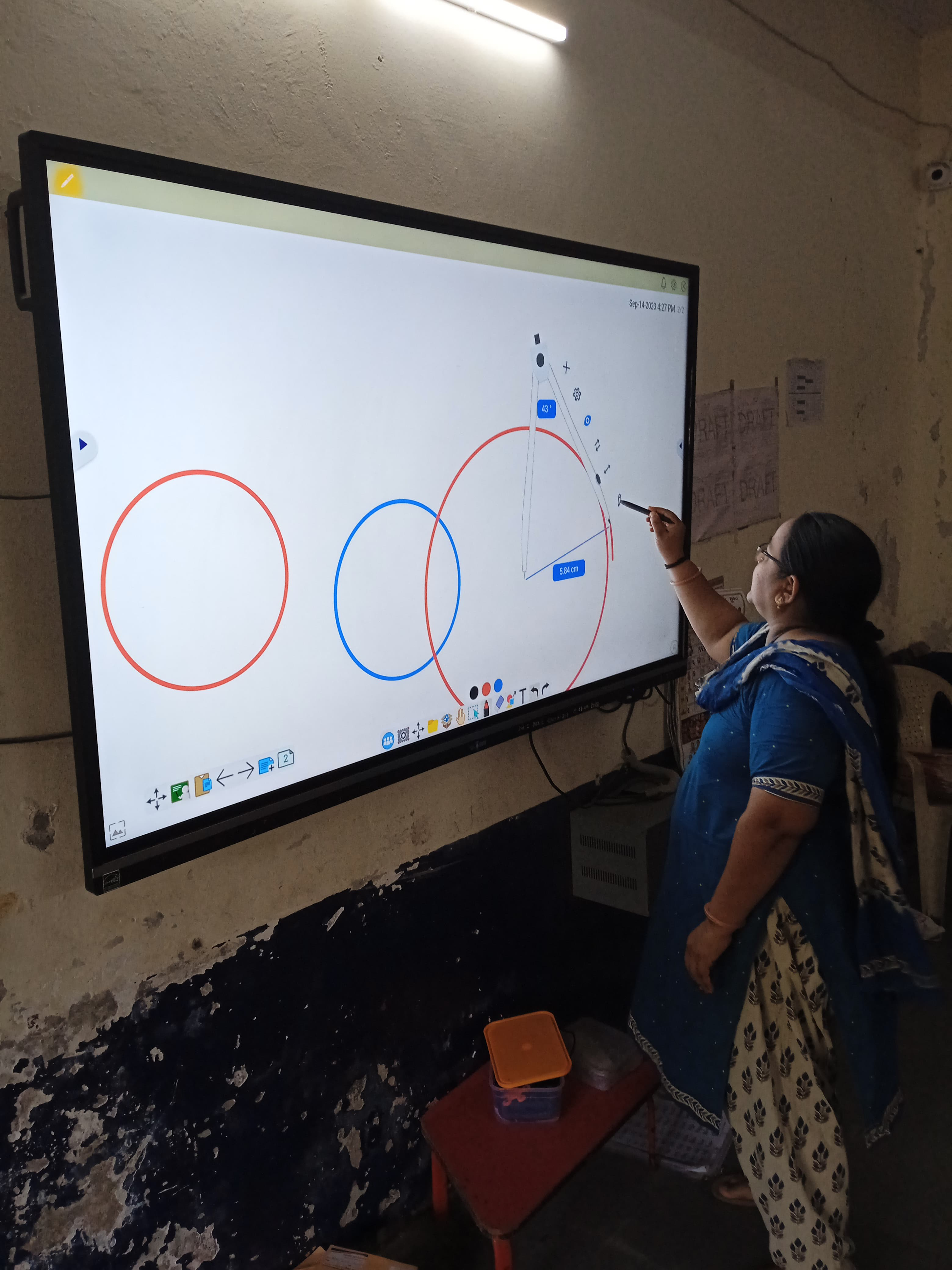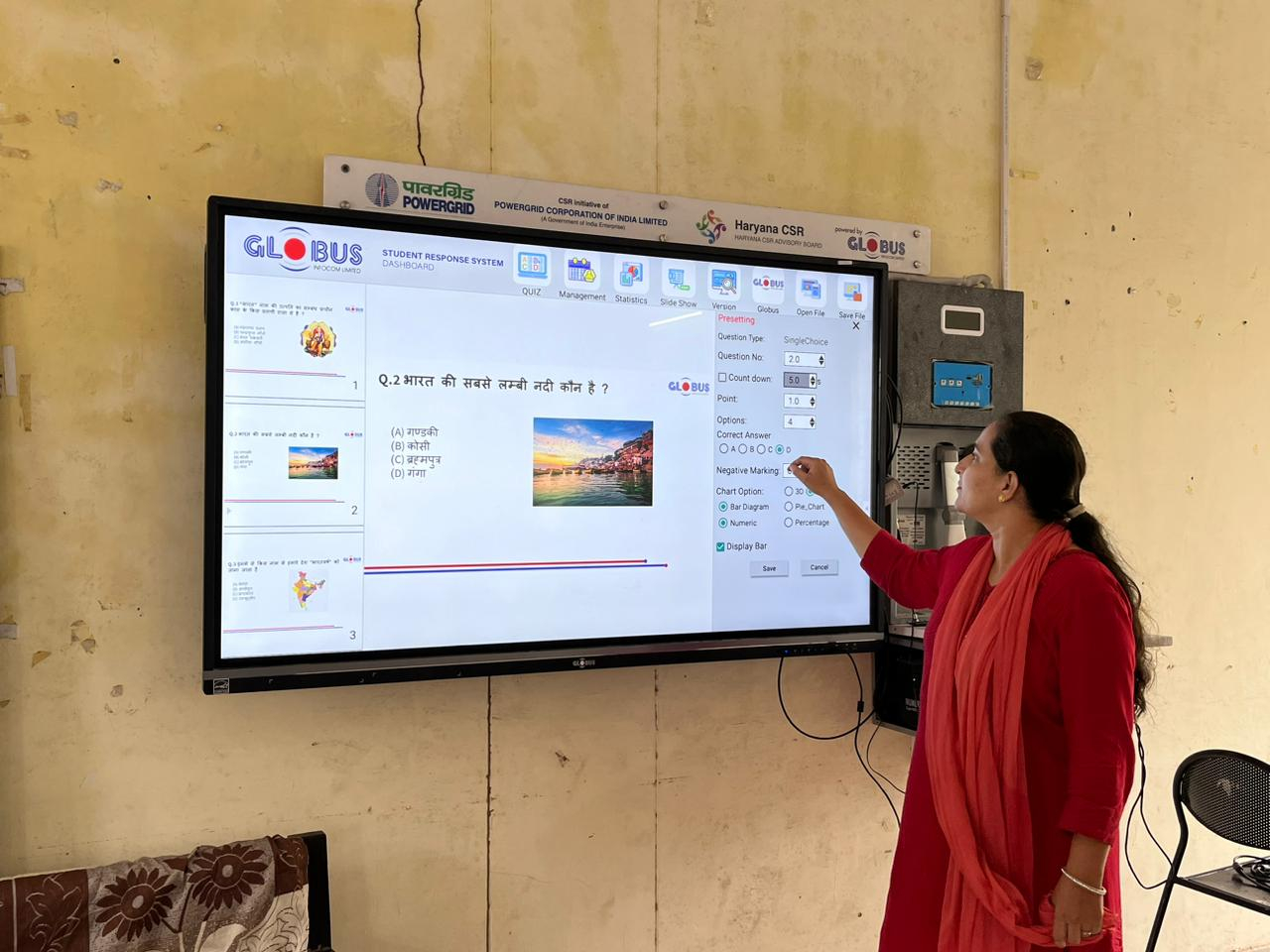- Description
-
Details
In the digital age, the conventional classroom is undergoing a significant transformation. Traditional blackboards and textbooks are being replaced by interactive whiteboards and digital content. This evolution is driven by the advent of smart classrooms, a technological revolution that promises to enhance the learning experience in numerous ways. In this article, we will explore what a smart classroom is, its key components, and the compelling reasons why educators and institutions need it.
What is a Smart Classroom?
A smart classroom is an innovative learning environment that leverages technology to enhance the teaching and learning process. Unlike traditional classrooms, smart classrooms are equipped with various digital tools and resources that empower educators and engage students. Key components of a smart classroom include:
1. Interactive Whiteboards:
Interactive whiteboards replace traditional chalkboards and projectors. These touch-sensitive boards allow educators to write, draw, and interact with digital content. They enable dynamic presentations and facilitate collaborative learning.
2. Multimedia Content:
Smart classrooms integrate multimedia content such as videos, animations, and interactive simulations into lessons. This makes learning more engaging and accommodates diverse learning styles.
3. Internet Connectivity:
High-speed internet access ensures that students and educators can access online resources, conduct research, and collaborate with peers globally.
4. Student Devices:
Laptops, tablets, and smartphones are often used in smart classrooms to access digital textbooks, take notes, and participate in interactive activities.
5. Learning Management Systems (LMS):
LMS platforms like Moodle, Blackboard, or Canvas facilitate online collaboration, assignment submission, and grade tracking. They provide a centralized hub for educational content and communication.
6. Data Analytics:
Smart classrooms often incorporate data analytics tools that help educators track student progress, identify areas for improvement, and personalize learning experiences.
Why Do You Need a Smart Classroom?
Now that we understand the components of a smart classroom, let's delve into why they are indispensable in modern education.
1. Enhanced Engagement:
One of the most significant advantages of smart classrooms is their ability to engage students actively. Interactive whiteboards and multimedia content make learning visually appealing and interactive. Students are more likely to be attentive when lessons are presented in a dynamic and interactive manner.
2. Personalized Learning:
Every student has unique learning needs and pace. Smart classrooms offer the flexibility to cater to individual learning styles and abilities. With data analytics, educators can identify where each student is struggling and tailor instruction accordingly.
3. Access to Global Resources:
Smart classrooms provide students and educators with access to a vast array of online resources. Whether it's research articles, virtual labs, or educational videos, the internet expands the classroom beyond its physical boundaries.
4. Collaboration and Communication:
In a smart classroom, collaboration is not limited to in-person interactions. Students can collaborate on projects, share ideas, and communicate with peers and experts worldwide. This prepares them for the interconnected global landscape.
5. Sustainability:
Smart classrooms are often more environmentally friendly than traditional classrooms. With digital textbooks and reduced paper usage, they contribute to a sustainable future.
6. Teacher Empowerment:
Educators benefit from smart classrooms as well. These tools streamline administrative tasks, automate grading, and provide valuable insights into student performance. This allows educators to focus more on teaching and mentoring.
7. Future-Ready Skills:
Incorporating technology in education equips students with digital literacy skills that are essential in the modern workforce. They become proficient in using various digital tools, which enhances their employability.
8. Cost-Effective in the Long Run:
While setting up a smart classroom may require an initial investment, it can lead to cost savings over time. Digital resources are often more cost-effective than traditional textbooks, and the reduced need for physical infrastructure can result in long-term savings.
9. Accessibility and Inclusivity:
Smart classrooms can be designed to accommodate students with diverse needs. Features such as screen readers, captioning, and adjustable font sizes make content more accessible to all learners.
10. Real-Time Assessment:
Smart classrooms enable real-time assessment and feedback. Educators can use online quizzes, polls, and surveys to gauge student understanding instantly and adjust their teaching accordingly.
11. Parent-Teacher Collaboration:
Parents can stay informed about their child's progress through online portals and communication tools. This fosters stronger partnerships between educators and parents.
12. Scalability:
Smart classroom solutions can be scaled up to accommodate growing student populations. As educational institutions expand, they can adapt their technology infrastructure accordingly.
13. COVID-19 Resilience:
The COVID-19 pandemic underscored the importance of technology in education. Smart classrooms enable seamless transitions between in-person and remote learning, ensuring education can continue even during challenging times.
Conclusion
In conclusion, the adoption of smart classrooms in education is not just a technological trend; it is a necessity. The benefits of enhanced engagement, personalized learning, access to global resources, and the development of future-ready skills cannot be overstated. Furthermore, smart classrooms empower both educators and students to thrive in the digital age.
While there may be initial challenges in implementing smart classroom technology, the long-term advantages in terms of cost savings, improved learning outcomes, and adaptability to changing circumstances make it a worthwhile investment. As we move forward in the 21st century, the smart classroom is poised to become the new standard in education, providing a dynamic and enriching learning environment for generations to come.
Smart Classroom Images






- Reviews
-
Default welcome msg!

